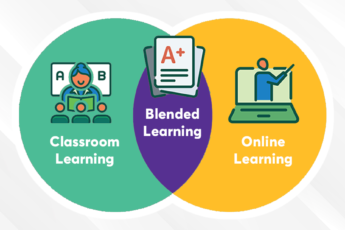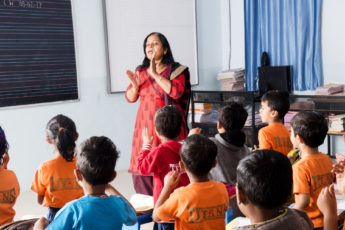Supporting Children’s Learning At Home
The last two years have been all about adapting to change, with schools closed across the globe and students staying at home as health and safety concerns took centerstage and learning was being conducted remotely. Teachers use digital tools to communicate with students and impart education. But with messy remote learning, parents are looking for ways to help their kids stay on track. At the elementary level, there is a strong correlation between parental involvement and student achievement. Research has shown that when parents are involved in their child’s education, children tend to feel better about school and perform better in class. Both at home and school, there are many things parents can do to help their children’s learning. Here are some ideas to get you started!
Demonstrate a Positive Attitude
One of the advantages parents have over teachers is that they spend a lot of time with their kids, and they get very good at reading the nuances in their words and actions. Parents can help support their children’s learning outside of school by offering them positive, relaxed, and fun learning environments at home. Although children naturally want to learn new things, they are often most successful when they are allowed to discover new concepts at their own pace, in their own time.
Parents can demonstrate how to think about things (such as solving problems) rather than tell them what to think (or how to do something). Rather than instructing children with directives like ‘Don’t forget your homework,’ you might remind them that they will need their workbook for class tomorrow morning. A study has shown that parents and families can play a crucial role in boosting student achievement and sustaining the momentum needed to reinforce positive attitudes toward school.
Monitor the Screen Time
Remote learning has become a widely accepted trend across the globe. While the internet has proven to be a valuable educational tool, several studies highlight just how dangerous it can be for young children. Students who spend an excessive amount of time surfing the web are less likely to perform well in the classroom.
Today’s children are immersed in the media. With remote learning, children are already spending a lot of time on their computers. And it’s not simply the TV shows, videogames, or internet they watch or play with—it’s all of them. One hour of television uses the same word-retrieval skills as two hours of homework. Media without parental guidance can become a detriment to learning by taking away time usually spent studying and completing schoolwork.
Monitoring a child’s screen time is a way to help them develop their time management skills and avoid getting distracted. The first thing you should do as a parent is to inventory how much time your kids spend on screens. In particular, take note of what they’re doing on those screens. While there is no set rule on how much screen time is allowed, you can try to limit it, especially when your child does facetime and gives up physical activity and face-to-face communication with people.
Promote Active Learning
Active learning is significant for young children, who are still building their understanding of the world. It helps them learn not just new things but also how to learn. When children are constantly told what to do or simply left alone with an assignment or a book, they are not challenged to think for themselves. As a result, they miss opportunities to develop the skills required for higher-order thought, including critical thinking and problem-solving.
Active learning involves guiding your child’s exploration and helping her develop her interests to acquire social skills. You can help build your child’s active learning by providing opportunities for him to play freely with other children. Also, teach functional problem-solving skills by asking your child questions about his activities and explaining your problems at work. With the use of technology in today’s classrooms, it’s no surprise that nowadays, there are many real-life applications for this theory.
Active learning can be anything that encourages the brain to think, test ideas and take action. It can include doing art or playing musical instruments, reading nonfiction or opinion pieces in the newspaper, making models, building things with blocks and Legos, taking photos, watching videos, and playing with your smartphone.
Encourage Reading
Reading is an important skill, not just for schoolwork but for life. Having used digital tools for studying for the last 1.5 years, we have already moved from the printed word to the screen. Reading isn’t just about getting good grades or passing some tests. Having a reading habit is an essential element for children to enrich their knowledge, whether from newspapers or storybooks. In addition to practicing reading skills, it can enhance their imagination, widen their perspective and improve their language skills.
You can’t rush a child’s reading development — but you can help your child along the way by establishing a love for reading from an early age. By being aware of your child’s readiness for learning how to read, you will be able to nurture a strong foundation of literacy that will serve your students well for decades.
The Bottom Line
Children learn better when their parents are involved. As a parent, you can reinforce your child’s learning through routine activities at home. We believe that a child’s development is a direct product of home life and that an early childhood educator’s responsibility begins before the school day.
At Square Panda India, we acknowledge the importance of parental involvement in early childhood education. We take special measures to create awareness amongst teachers about how important it is to share ideas and resources with families. This awareness helps our educators develop effective strategies to integrate family participation in learning activities.




Leave a Comment